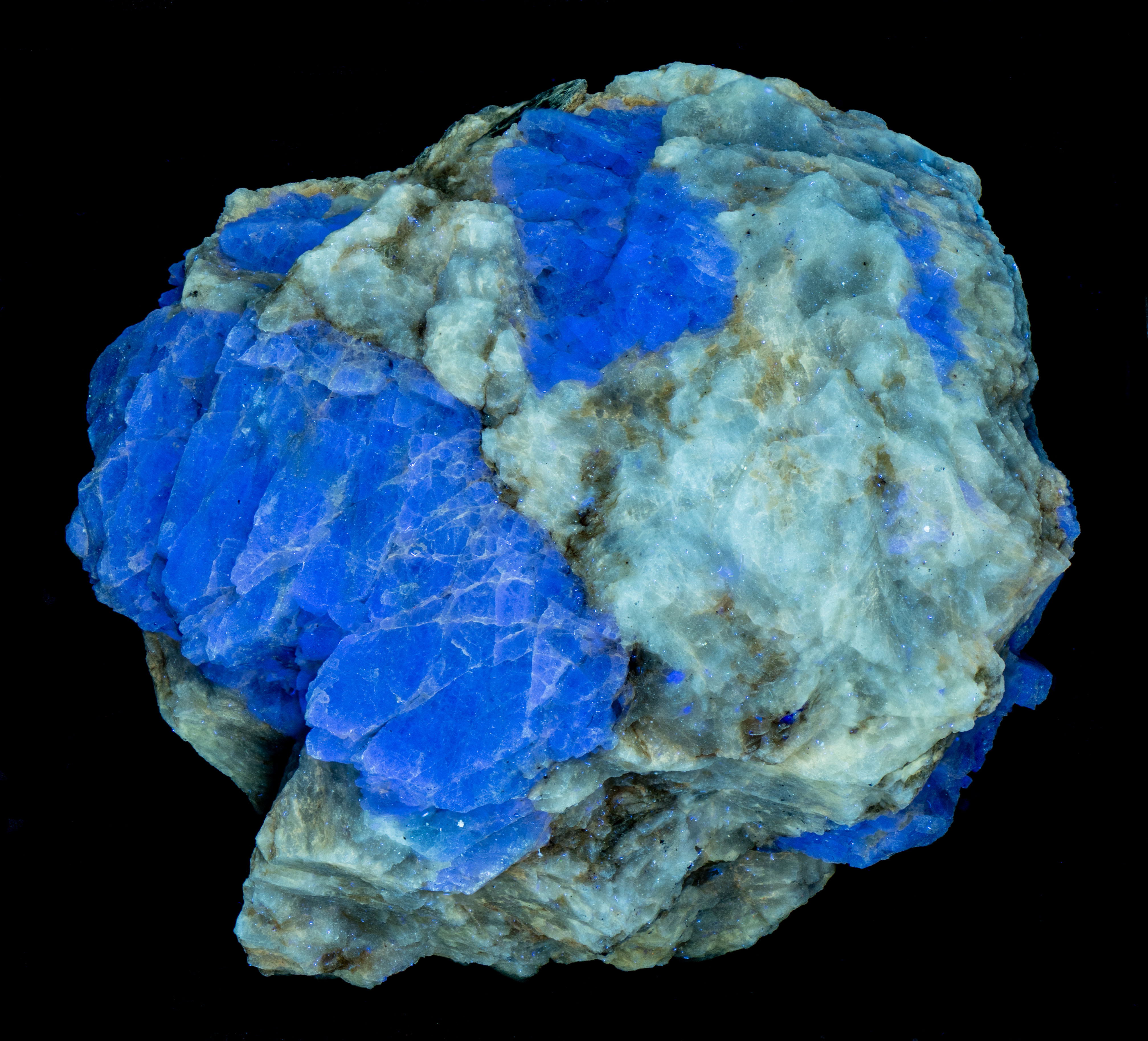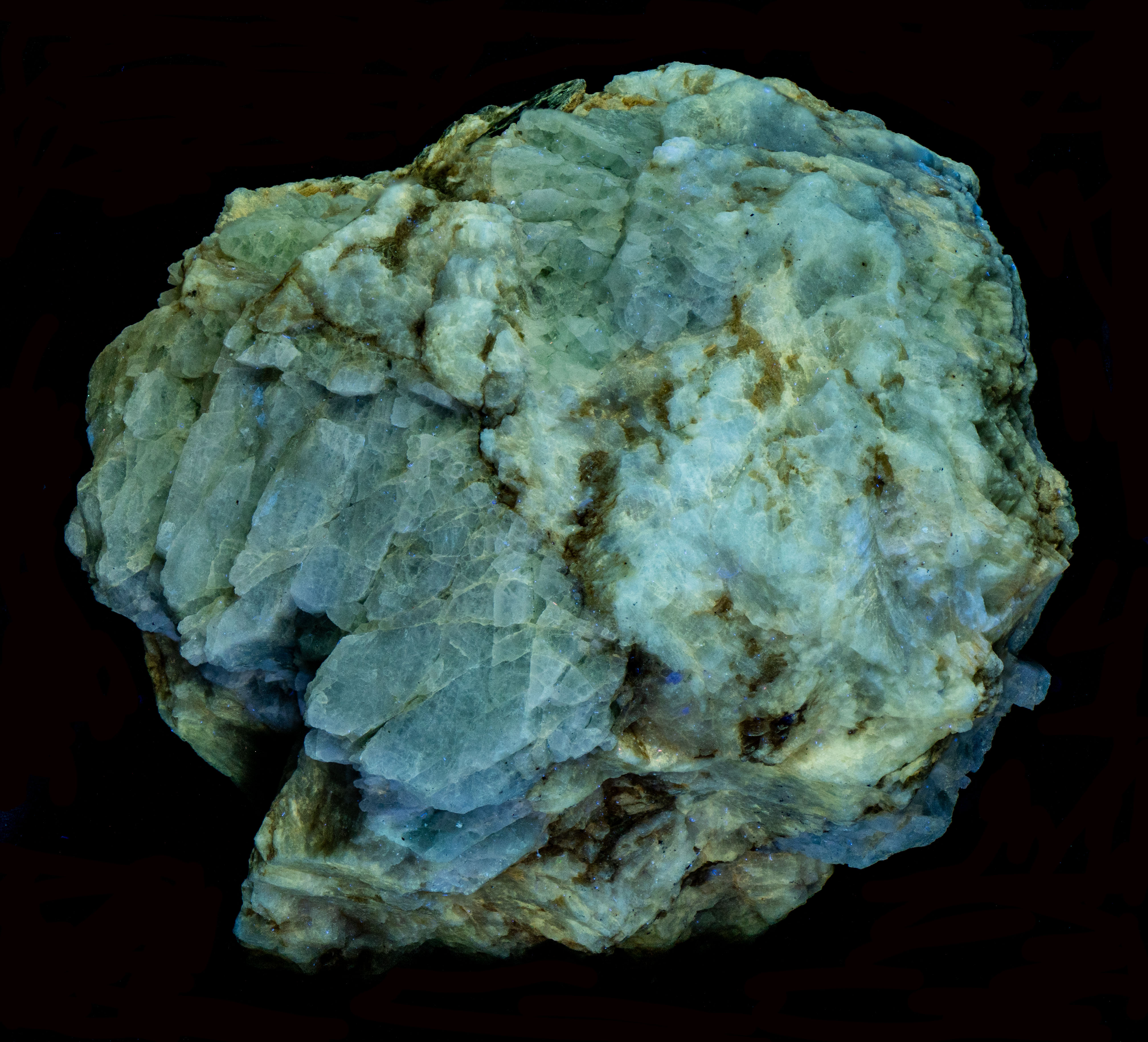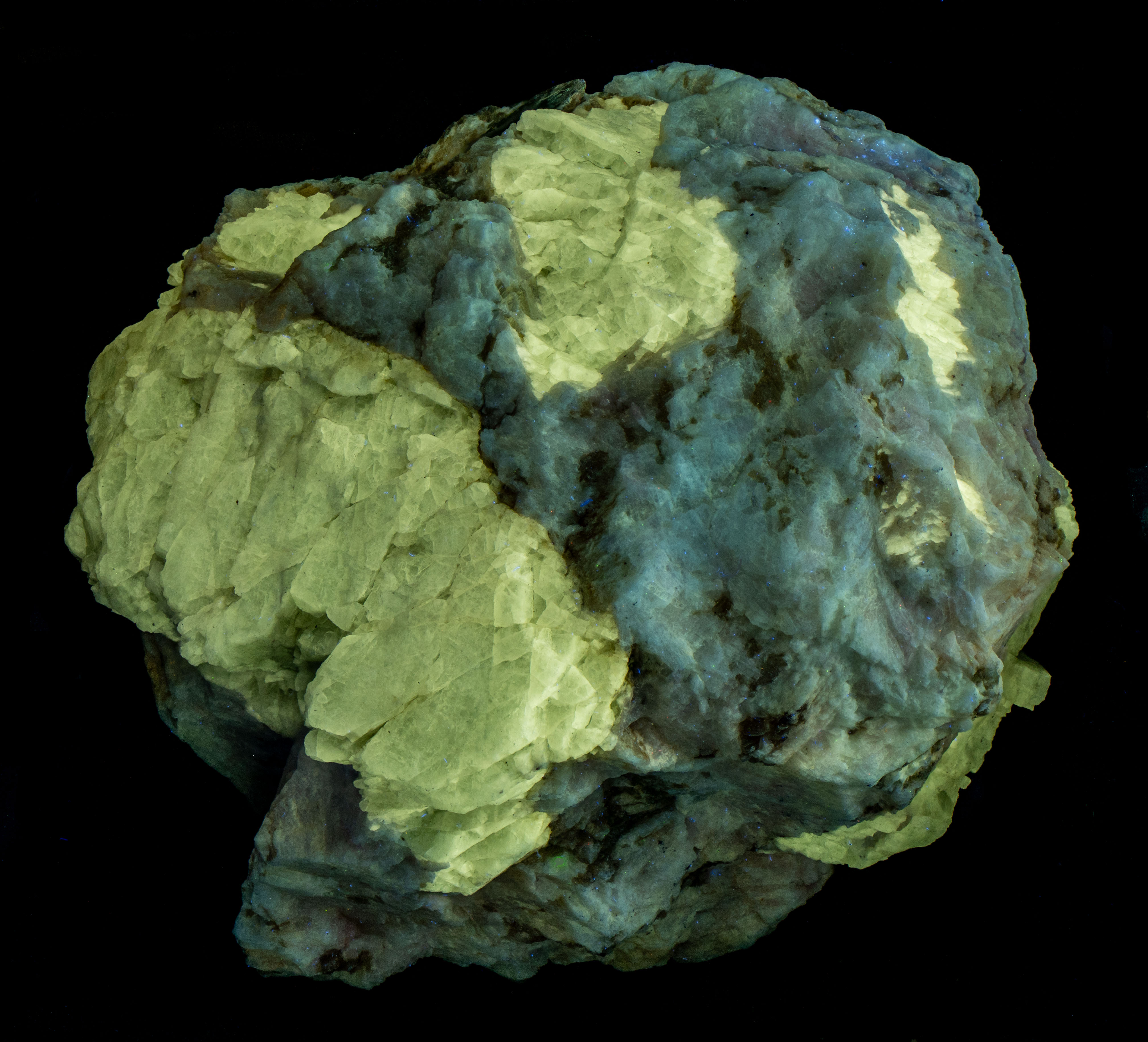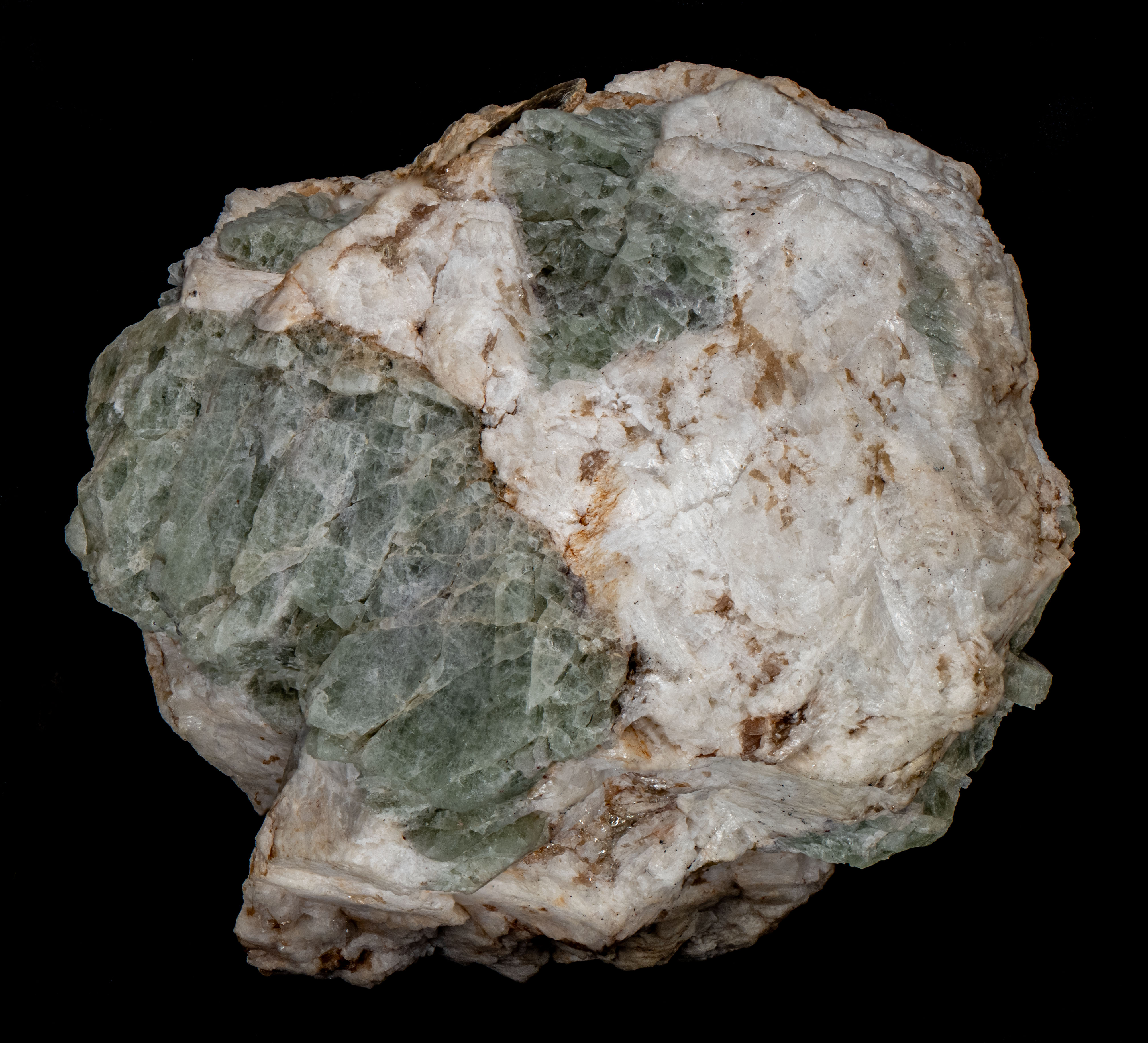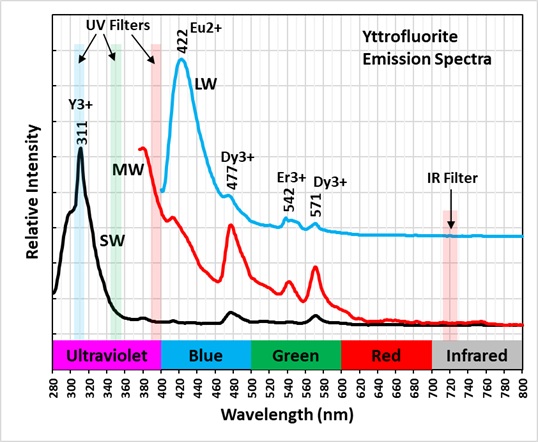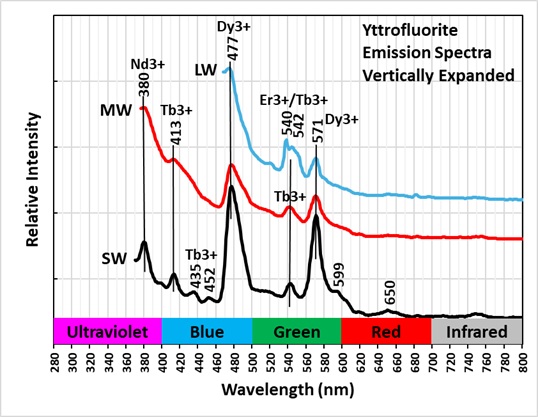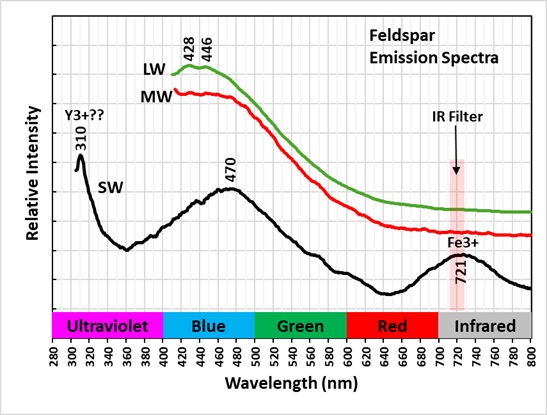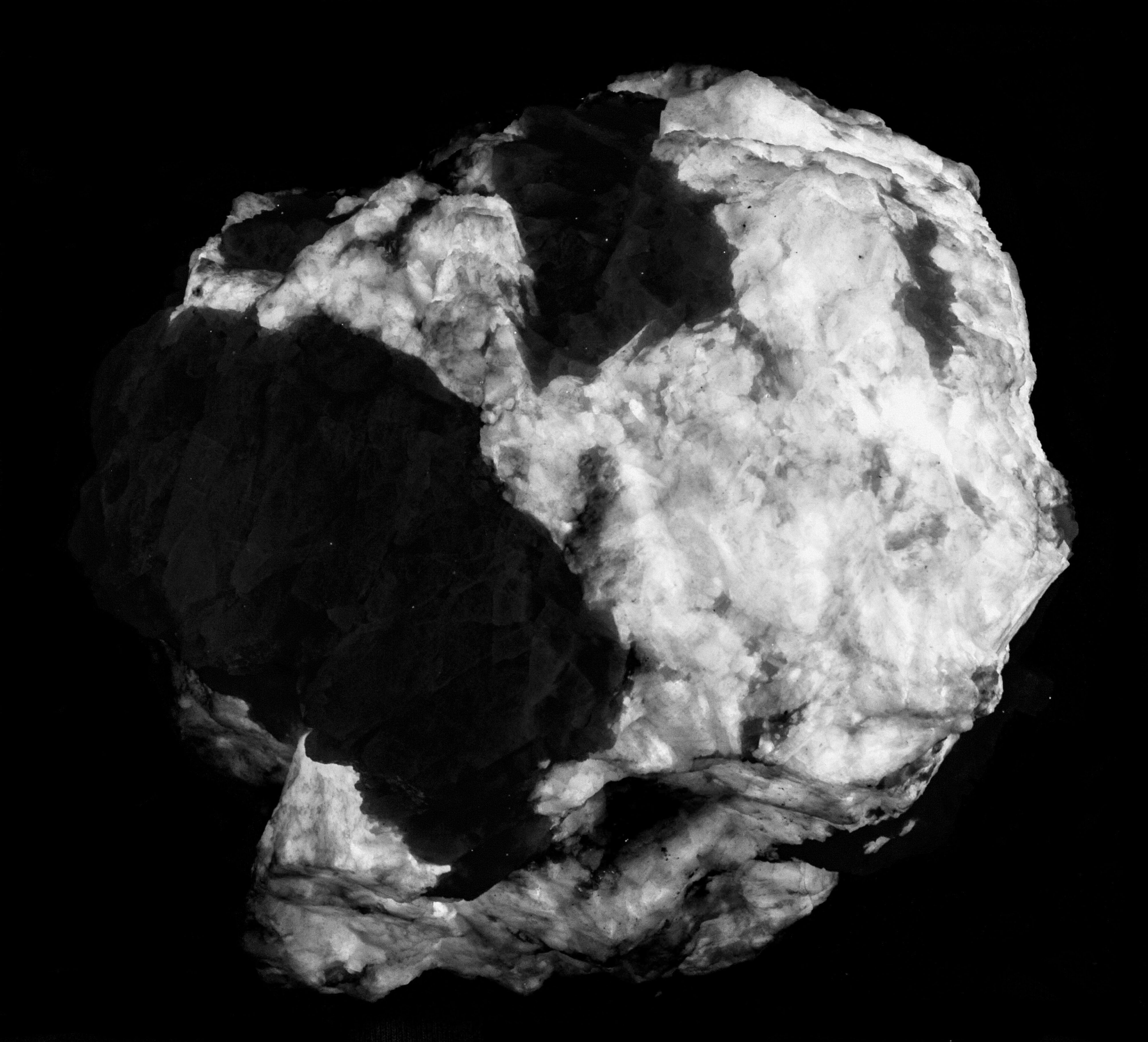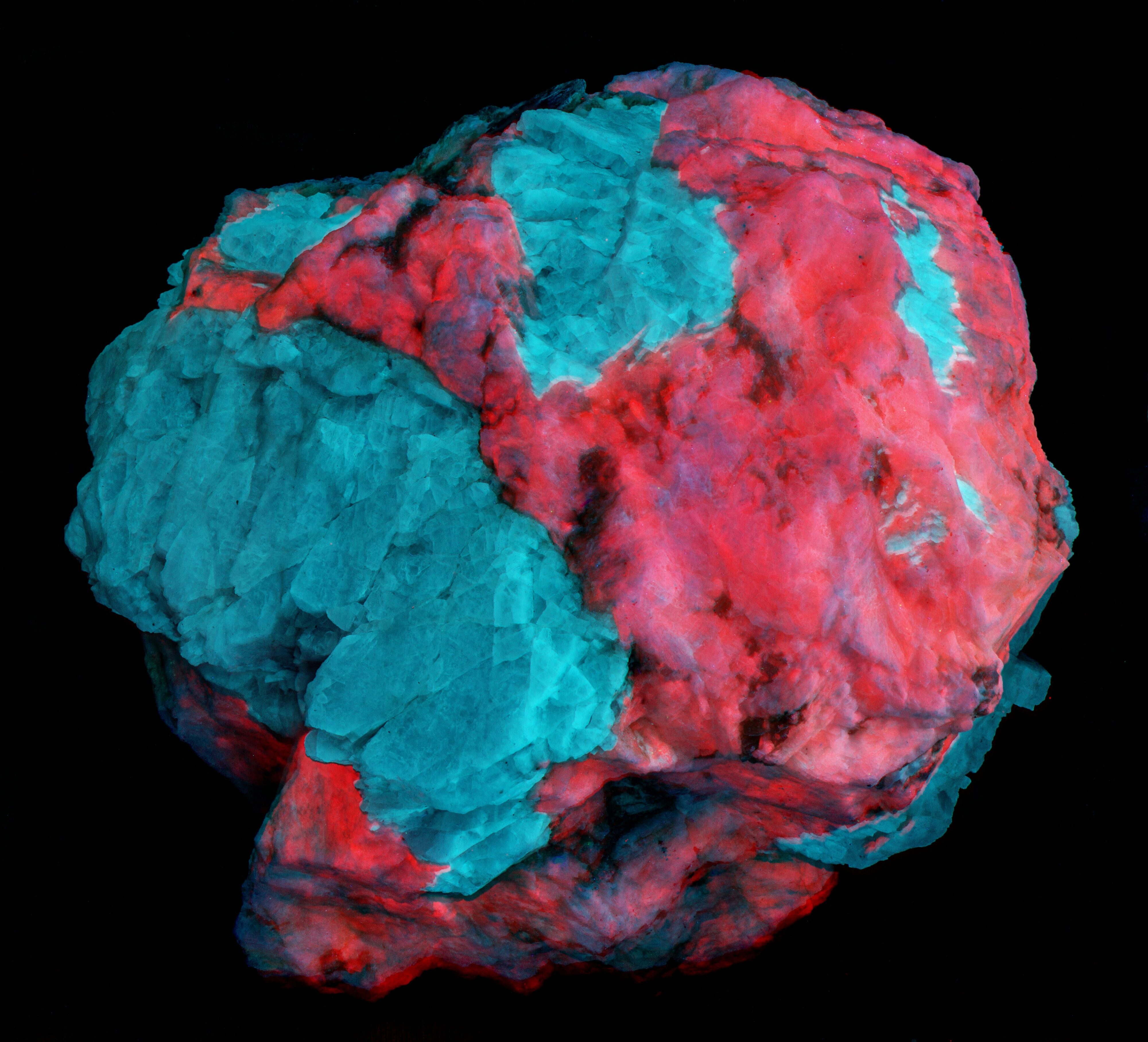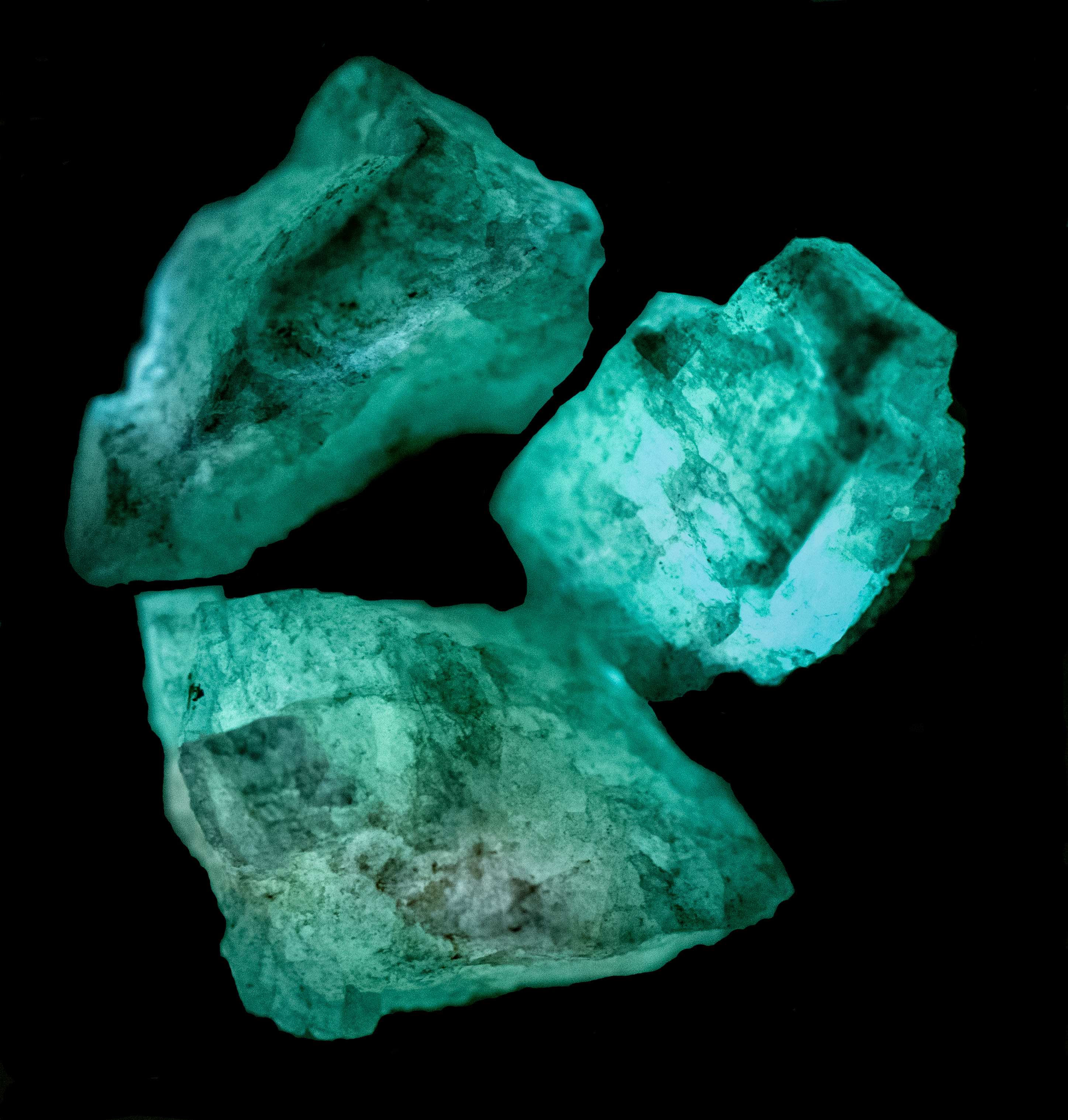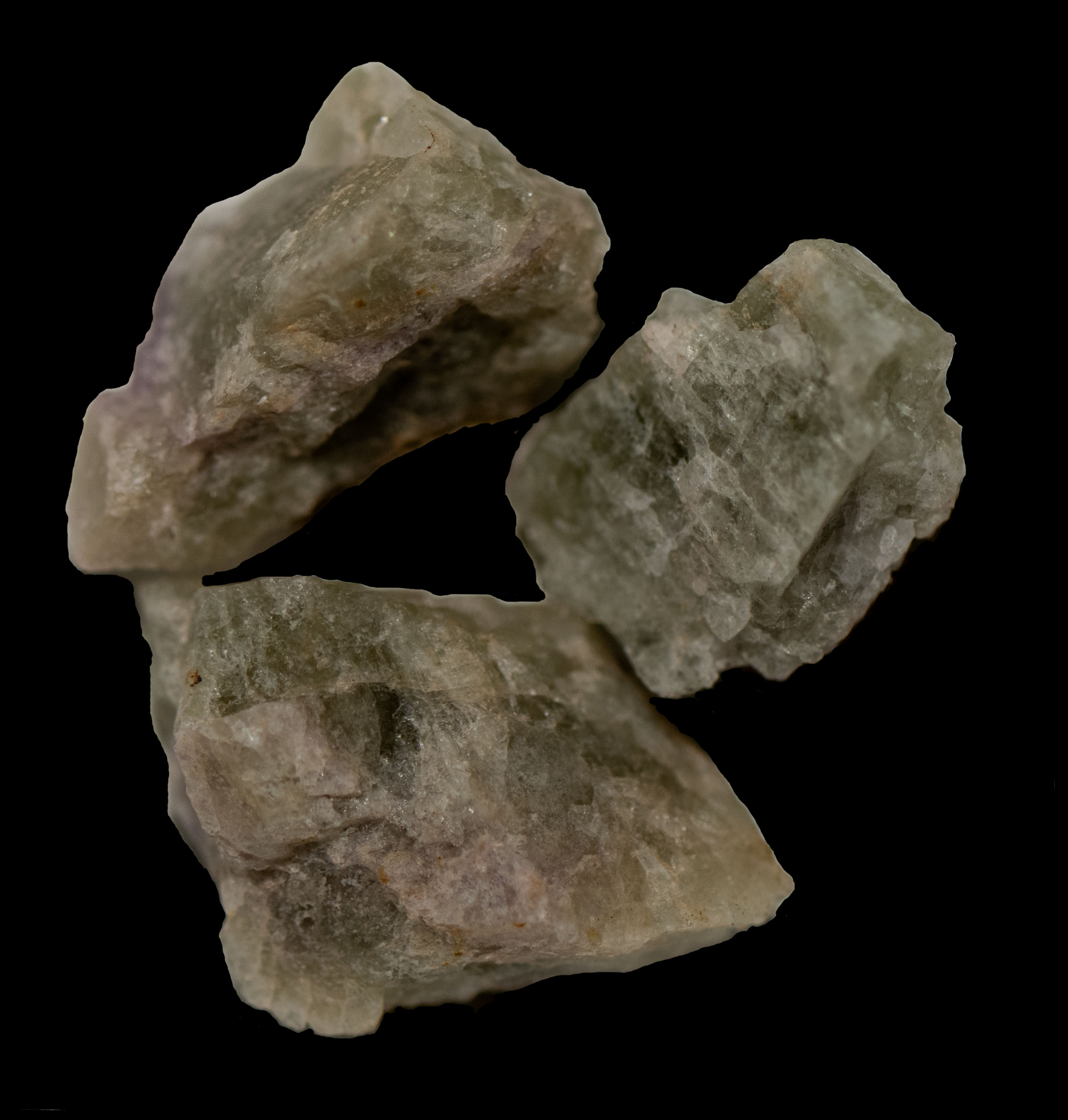Yttrofluorite from the Globe Pegmatite, New Mexico
Contributed by: Michael Crawford
Date: Jul 13th, 2025
Locality: Globe pegmatite (Globe Mine), South Petaca, Petaca Mining District, Rio Arriba County, New Mexico, USA (See on Mindat)
Size: 6.5 x 7 cm
Description:
A specimen of yttrofluorite and albite from the Globe Pegmatite, Rio Arriba County, New Mexico. The yttrofluorite fluoresces blue under longwave UV illumination like a typical fluorescent fluorite activated by europium. However, the yttrofluorite fluorescence changes color under midwave and shortwave illumination. These color changes occur because there are several other rare earth elements beside europium replacing calcium in the yttrofluorite structure. The emission spectra of longwave, midwave, and shortwave UV illumination shows many peaks caused by a variety of rare earth activators (yttrium, terbium, erbium, dysprosium, and neodymium). This yttrofluorite is also phosphorescent after exposure to all UV wavelengths.
The yttrium activates strong fluorescence in the ultraviolet region that is considerably brighter than the visible fluorescence. The fluorescence peaks at 311 nm. The light blue areas in the false color image of the ultraviolet fluorescence map the yttrofluorite coverage. The set of images also includes an image of near infrared fluorescence under shortwave illumination from albite. The color infrared image made from the green and red visible bands, and the near infrared image shows the albite as red from the near infrared fluorescence and the yttrofluorite as cyan from the visible fluorescence.
Yttrofluorite from the Globe Pegmatite is also thermoluminescent. When heated it glows blue green. If the temperature gets too hot, the yttrofluorite will no longer fluoresce and react to being heated. Repeated cycles of heating will also destroy the fluorescence.
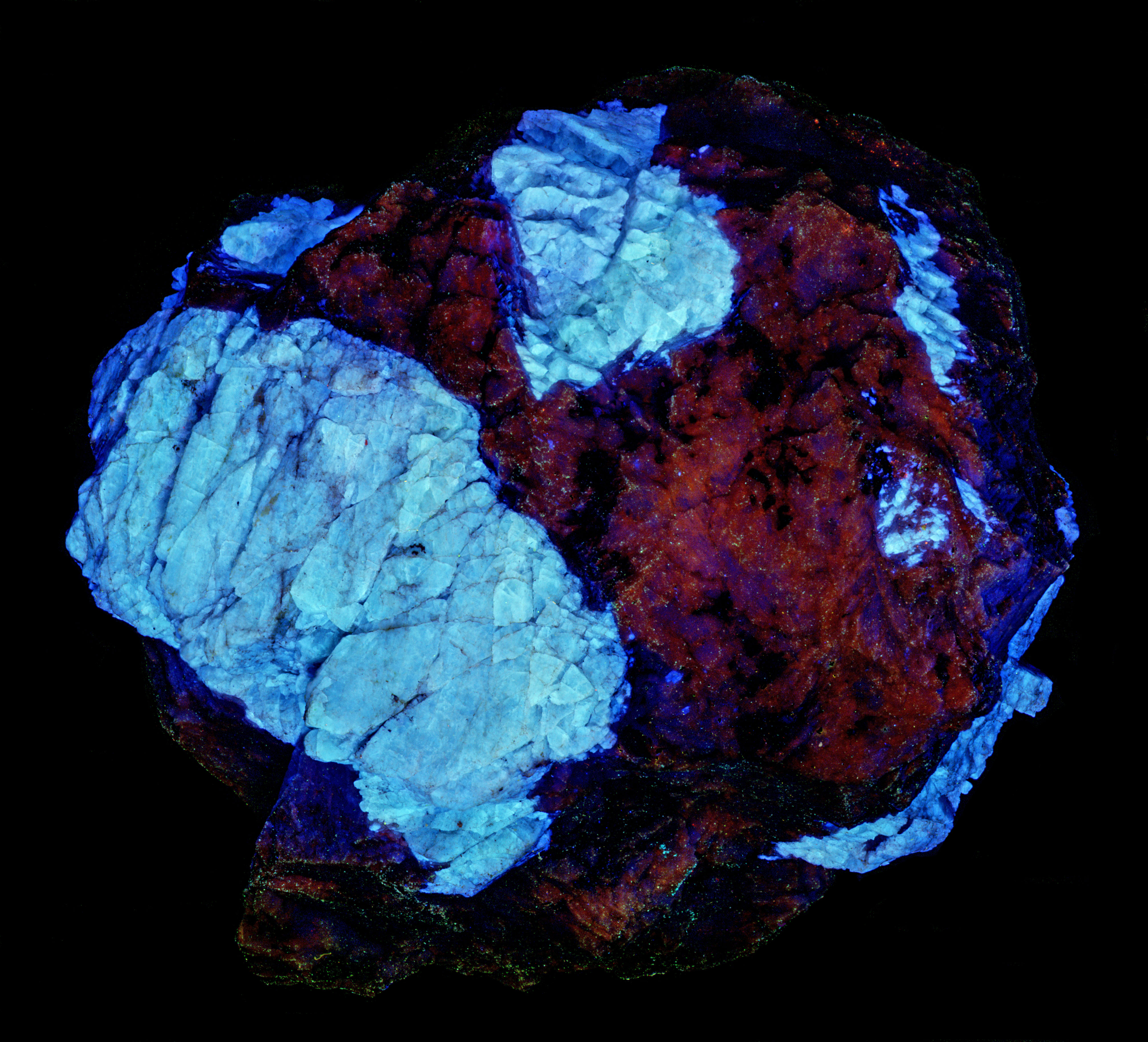
Summary of luminescence responses:
Fluorite (Mindat) (RRUFF)
- Fluorescence under Longwave (365nm LED) UV light: Blue
- Fluorescence under Midwave (305nm LED) UV light: White
- Fluorescence under Shortwave (255nm LED) UV light: White
- Fluorescence under Longwave (365nm LED) UV light: White

